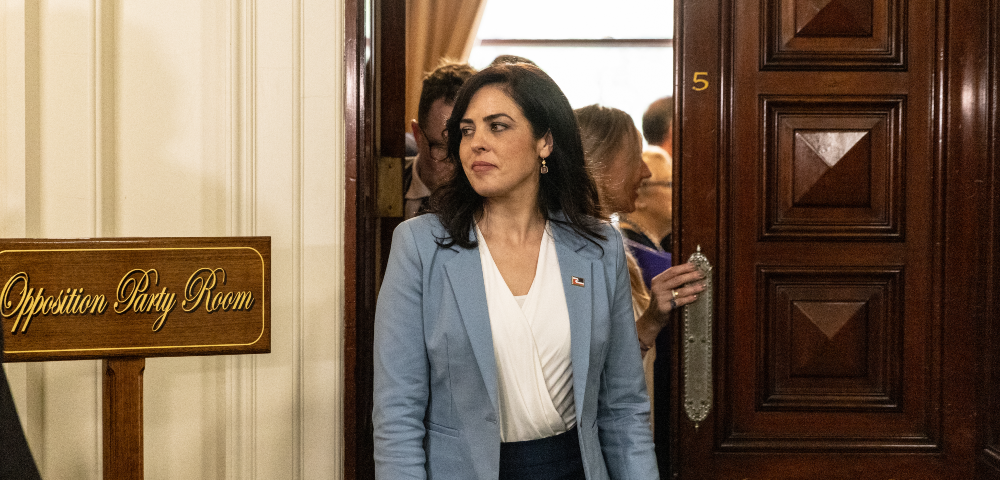
Special Investigation: Scrapped dental scheme’s HIV fallout
BY ROBERT BURTON-BRADLEY
The federal government has suggested low income earners living with HIV/AIDS and other serious illnesses should take up private health insurance when it scraps a dental scheme for people with chronic diseases.
Up to 300,000 people will be locked out of the Chronic Diseases Dental Scheme (CDDS) after Health Minister Tanya Plibersek flagged its closure, claiming the non-means tested scheme was being used by millionaires and being rorted by dentists to cover for cosmetic dental work.
HIV/AIDS groups have warned a significant proportion of low income earners will miss out under the new scheme because they don’t qualify for Commonwealth low income health care concession cards.
The executive director of the Australian Federation of AIDS Organisations (AFAO), Rob Lake, said the government was simply cutting a large number of vulnerable and very sick people from vital dental care.
“The issue for us is that for people with HIV/AIDS on low incomes, and significantly, people who are not on pensions or unemployment benefits, but maybe doing casual work or earn low wages yet can’t get a concession card – their health care costs are huge,” Lake told the Star Observer.
“We have to be honest, a lot of people with HIV/AIDS who previously just couldn’t get the dental care that they needed through the public dental system have benefited from the CDDS.”
Positive Living NSW CEO Sonny Williams agreed that low-income earners in particular would be affected.
“The group that I suspect will be affected the most will be the working poor, so they are working but their wages are not huge,” he said.
The health groups also expressed alarm at the 13-month gap between the closure of the CDDS and its replacement in 2014, and warned the move will push some of the most disadvantaged Australians into an overcrowded and under-funded state dental care system.
Williams said that the state-based system, where waiting lists were as long as two-years, would not be able to cope with the influx of new patients.
“It’s critical for people with HIV to have good dental care and I think the impact will clearly be waiting lists, they are a problem now; how do you get in for urgent care and ongoing maintenance regularly in that environment?” he said.
The government has said it will provide $344 million from the 2012-2013 budget to the states to deal with the expected influx into the public system.
However, the state public dental system, like the CDDS replacement scheme, is only available to healthcare card holders.
Under current thresholds for low income health care cards a single person earning just $26,000 a year does not qualify. A childless couple must earn less than $43,836 a year.
Sydney University oral pathologist professor Hans Zoellner said the government was throwing people on the “scrap heap” by pushing them into the public system and was completely excluding the working poor.
“We know the state-run public services simply cannot cope,” he told the Star Observer.
“The reality is you can double the amount of money and it does not make any difference because you can’t attract more dentists to work in that area because the private sector is so much more attractive, so the spending does nothing to reduce waiting times or improve patient outcomes.”
Under the CDDS, eligible patients with a chronic disease could receive up to $4,250 worth of dental care every two years at a dentist of their choosing.
Plibersek said the CDDS had blown out to almost $1 billion a year from initial budgeting of around $90 million a year. Her office referred the Star Observer’s questions to the Department of Health and Ageing.
Zoellner said that the government’s own figures showed 80 percent of the more than 1.5 million people who had used the CDDS were low-income healthcare card holders and said the government’s claims of cosmetic rorting and millionaires using the scheme were ludicrous.
The Department of Health could provide no evidence of rorting to the Star Observer.
According to Zoellner, the scheme would actually cost less if it was managed better rather than scrapped. He said the average claim had already reduced from $2000 per patient to around $1000 now. He called on the cross bench MPs, whose support is needed for the CDDS to be shut down, to oppose closure and instead urged reform of the scheme.
A spokeswoman for the Department of Health said the new scheme from 2014 would provide $2.7 billion in dental care to children in families eligible for the family tax benefit A.
“The government will also be providing $1.6 billion for public sector dental services for adults. Pensioner and concession card holders are eligible for public dental services,” she said in a statement.
“Patients who do not meet the eligibility criteria for public dental services can take advantage of private health insurance to assist with the cost of services.”
An online petition to save the scheme was approaching 14,000 signatures this morning.









